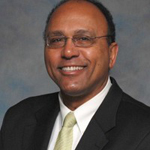Web Exclusive
Getting Ahead of Emerging COVID-19 Hot Spots
By Victor Collymore, MD, FACP, and David Hom
From the beginning of the COVID-19 pandemic, it has felt like the health care industry has been playing catch-up. Given the fact that the virus and its impact were unknown, clinical leaders and others had to learn about its nature and underlying factors on the fly as they were attempting to treat this devastating pandemic.
Now that there are enough data to analyze, certain key patterns have begun to appear. While most health care professionals and even lay people are aware that many of the highest-risk populations were those with one or more preexisting chronic conditions, there is another cohort that has largely been hidden in the shadows: patients with social determinants of health (SDOH) issues.
It makes sense. People who are struggling with challenges on the bottom tier of Maslow’s Hierarchy of Needs (food scarcity, housing instability, limited access to transportation, etc) tend to focus more on those immediate, day-to-day needs than on some invisible disease. As such, sheltering at home and other preventive measures designed to flatten the curve and manage the potential impact will prove even more difficult for those with SDOH challenges.
Applying the Data
What’s interesting is what happens when you overlay data from the Centers for Disease
Control and Prevention and other sources showing where COVID-19 is already present with data about the US population that tracks risk factors based on preexisting conditions, state-reported County Health Rankings, and publicly available demographic and sociographic data (including SDOH). Using deep analytics bolstered by actuarial experience, you get a heat map that highlights the US counties most prone to becoming the next at-risk hot spots for COVID-19 (see accompanying infographic).
This isn’t just an intellectual exercise, however. Armed with this information, health payers and providers in high-risk counties can look ahead and begin mobilizing to prepare for a potential surge in COVID-19 patients. For example, they can make critical decisions about intervention planning, eg, obtaining the necessary resources and equipment and developing multitier strategies for deploying physicians, nurses, and other licensed medical professionals before they are overwhelmed. They can also begin working more actively with community resources to address SDOH issues so they can keep the populations facing these concerns healthy and out of the hospital or emergency department.
As additional data are acquired, the original models can be refined further to increase the precision of the analytics, enabling payers and providers to direct their resources (clinical and financial) where they’re most needed. These data will also show what levers that have already been pulled—eg, social distancing, closing businesses, and delivery of care in alternate settings such as telehealth—were most effective in slowing the spread. We can then use this information and an ongoing surveillance of risk to make better decisions if a second surge hits.
A Forward View
Since the situation is constantly evolving, a continuous effort must be made to ensure we remain on top of emerging risk areas.
It is important to recognize, however, that these valuable analytics have applications that can extend well beyond the current crisis. What we learn now about SDOH issues and their effect on the health of the entire US population can be used to reduce the factors that made the COVID-19 pandemic so deadly, while improving the health of the entire country in a post–COVID-19 world. 
— Victor Collymore, MD, FACP, is the vice president and chief medical officer at EXL Service, a multinational company, where he oversees utilization management, coordinates disease and care management, and liaisons with pharmacy, sales and marketing, data and predictive modeling departments, and life sciences.

— David Hom, chief evangelist at EXL, is an internationally recognized expert in the field of consumer engagement through programs such as Value Based Benefits and Employee Wellness.



